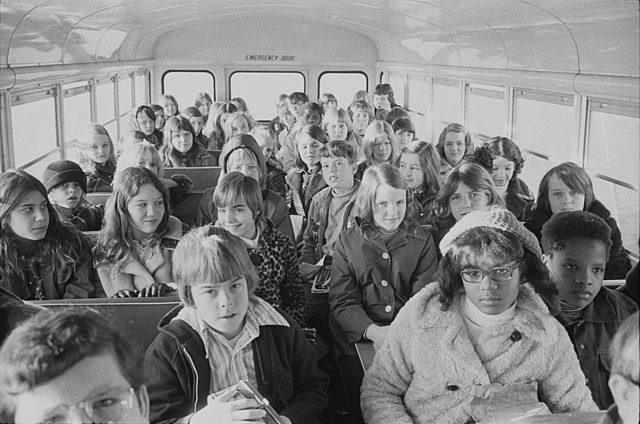Desegregation busing was a failed attempt to diversify the racial make-up of schools in the United States by sending students to school districts other than their own. While the 1954 U.S. Supreme Court landmark decision in Brown v. Board of Education declared racial segregation in public schools unconstitutional, many American schools continued to remain largely racially homogeneous. In an effort to address the ongoing de facto segregation in schools, the 1971 Supreme Court decision, Swann v. Charlotte-Mecklenburg Board of Education, ruled that the federal courts could use busing as a further integration tool to achieve racial balance.
Integrated busing in Charlotte, North Carolina, February 1973
Swann v. Charlotte-Mecklenburg Board of Education
Swann v. Charlotte-Mecklenburg Board of Education, 402 U.S. 1 (1971), was a landmark United States Supreme Court case dealing with the busing of students to promote integration in public schools. The Court held that busing was an appropriate remedy for the problem of racial imbalance in schools, even when the imbalance resulted from the selection of students based on geographic proximity to the school rather than from deliberate assignment based on race. This was done to ensure the schools would be "properly" integrated and that all students would receive equal educational opportunities regardless of their race.
Integrated busing in Charlotte in 1973

